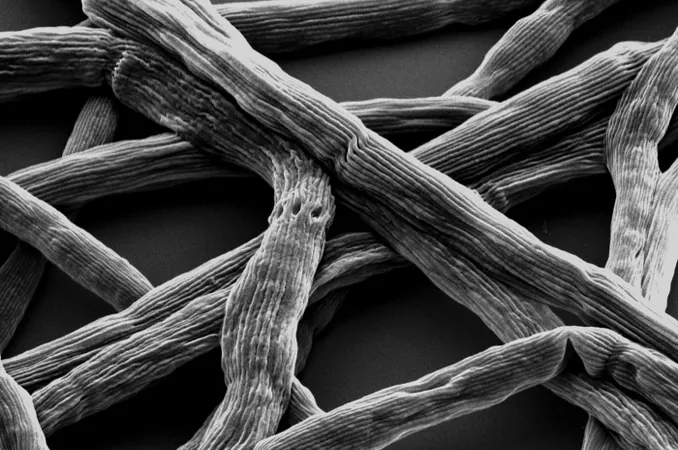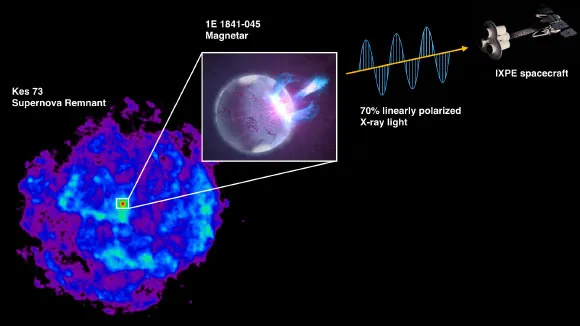
Unbelievable Discovery: Protons Flow Like Electricity in Filamentous Bacteria!
2025-01-16
Author: Arjun
Introduction
In a groundbreaking study, scientists have revealed that certain bacteria, belonging to the family Desulfobulbaceae, function like living electric cables by conducting both electrons and, now confirmed for the first time, protons over considerable distances within their filamentous structures. This revelation opens up exciting possibilities for geochemical transformations in sediment and beyond (Proc. Natl. Acad. Sci. U.S.A. 2025, DOI: 10.1073/pnas.2416008122).
Key Research Question
Lead researcher Bradley Lusk was driven by a key question: "What happens to protons in the unique microenvironments created by these bacteria during biodegradation?" He noted the potential risk of "pickling" if excess protons led to low pH levels. This curiosity about the transportation of protons outside their microenvironments sparked the investigation.
Challenges in Measurement
The scientific team faced significant challenges in measuring protonic conductivity. Traditional methods involving protodes (protonic electrodes) struggled to make reliable contact with the bacterial cells, complicating observations. To tackle this, Lusk and his colleagues innovated upon a technique previously used to study proton transfer between biopolymer chitosan and palladium contacts—key in allowing hydrogen absorption and breakdown into protons.
Innovative Technique
The process required precision: creating a palladium protode with extremely tiny gaps, aligning it with a cable bacterial cell, and employing a bespoke 3D-printed arm to execute the intricate process under an optical microscope. Remarkably, they were able to stamp the protode onto the bacteria, ensuring that protons would traverse the gaps to pass from one side to the other.
Conductance Measurement
After successfully transferring the protode-stamped bacteria into a controlled chamber infused with hydrogen, the team measured the electrical conductance at both ends. "The only way the protons could bridge the gap was through the cable bacteria," Lusk explained.
Findings and Observations
Throughout their analysis, they evaluated 12 different types of cable bacteria under varying conditions. Astonishingly, they observed variations in protonic conductivity—recording a peak of approximately 114 ± 28 µS/cm at a temperature of 25°C and at 70% relative humidity. They even noted a staggering 26-fold increase in conductance as humidity shot from 60% to 80%.
Future Applications
Despite these impressive findings, the evolutionary role of protonic conductance in cable bacteria remains a mystery. However, Lusk hints at the potential for innovative applications: "This research could pave the way for bioprotonic devices that serve as bridges between biological and non-biological systems," although he cautions that practical implementations may still be a decade or two away.
Expert Commentary
Clara Santato, a researcher affiliated with Montreal Polytechnic who did not partake in this study, praised the team's methodology. "This rigorous work offers new perspectives on the functional properties of bacteria and could significantly influence the development of sustainable organic electronics," she remarked.
Conclusion
Stay tuned for more electrifying updates as science continues to unravel the mysteries of our microbial world!


 Brasil (PT)
Brasil (PT)
 Canada (EN)
Canada (EN)
 Chile (ES)
Chile (ES)
 Česko (CS)
Česko (CS)
 대한민국 (KO)
대한민국 (KO)
 España (ES)
España (ES)
 France (FR)
France (FR)
 Hong Kong (EN)
Hong Kong (EN)
 Italia (IT)
Italia (IT)
 日本 (JA)
日本 (JA)
 Magyarország (HU)
Magyarország (HU)
 Norge (NO)
Norge (NO)
 Polska (PL)
Polska (PL)
 Schweiz (DE)
Schweiz (DE)
 Singapore (EN)
Singapore (EN)
 Sverige (SV)
Sverige (SV)
 Suomi (FI)
Suomi (FI)
 Türkiye (TR)
Türkiye (TR)
 الإمارات العربية المتحدة (AR)
الإمارات العربية المتحدة (AR)